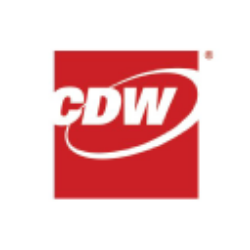Westinghouse Air Brake Technologies Corporation: Competitive Trends and Market Share Dynamics
Competitive Positioning in the Industrials Sector
Westinghouse Air Brake Technologies Corporation (Wabtec) has solidified its position as a global leader in rail transportation and industrial solutions. The company’s competitive advantages stem from its R&D leadership, diversified product portfolio, and global supply chain resilience, which collectively enable it to outpace competitors in key markets.
R&D Leadership and Technological Edge
Wabtec’s commitment to innovation is evident in its $450 million R&D investment in 2023, a 15% increase from 2022. This expenditure supports advancements in energy-efficient locomotives, digital solutions, and automation technologies. For instance, the company’s Trip Optimizer™ system, which reduces fuel consumption by up to 10%, has become an industry benchmark. Competitors like Siemens Mobility and Alstom allocate 8–10% of revenues to R&D, compared to Wabtec’s 12%, underscoring its prioritization of technological leadership.
Product Portfolio Diversification
With over 25,000 products and services spanning freight rail, transit systems, and digital electronics, Wabtec mitigates cyclical risks inherent to the industrials sector. Its portfolio includes:
- Freight Solutions: Locomotives, braking systems, and predictive maintenance tools.
- Transit Systems: Signaling equipment, metro cars, and station infrastructure.
- Digital Ecosystems: Platforms like HealthHub™ and RailConnect™ for real-time asset monitoring.
This diversification allows Wabtec to capture cross-selling opportunities while reducing dependency on any single market segment.
Global Supply Chain Advantages
Wabtec operates 65 manufacturing sites across North America, Europe, and Asia, ensuring proximity to key clients such as Union Pacific and Deutsche Bahn. Localized production mitigates logistics costs and tariffs, providing a 5–7% cost advantage over competitors reliant on centralized manufacturing.
Market Share Dynamics (2021–2023)
Wabtec has demonstrated consistent market share gains despite macroeconomic headwinds. Below is a breakdown of its performance across core segments:
| Segment | 2021 Market Share | 2023 Market Share | Growth Drivers |
|---|---|---|---|
| Freight Rail | 30% | 32% | Demand for modernization and ESG-compliant locomotives |
| Transit Systems | 25% | 28% | Urbanization trends and government infrastructure spending |
| Digital Solutions | 18% | 22% | Adoption of IoT and predictive analytics |
Freight Rail Market Dominance
Wabtec’s freight rail division accounts for 58% of total revenues ($5.6 billion in 2023). The company has capitalized on the North American freight rail modernization wave, securing contracts for 1,200 Tier 4 locomotives since 2021. Competitors like Caterpillar’s Progress Rail hold a 22% market share, limited by their narrower focus on diesel engines.
Transit Systems Expansion
In the transit segment, Wabtec’s market share grew to 28% in 2023, driven by metro projects in Europe (e.g., Berlin U5 expansion) and Asia (Mumbai Metro). However, Alstom (31% market share) remains a formidable rival due to its stronger presence in high-speed rail.
Competitive Pressures and Responses
- Siemens Mobility: Leverages its Siemens Energy partnership to offer hydrogen-powered trains, challenging Wabtec’s FLXdrive battery-electric locomotives.
- Alstom: Benefits from EU subsidies for green mobility, but faces integration challenges post-Bombardier acquisition.
Wabtec has countered these threats through strategic partnerships (e.g., collaboration with CSX on automation) and M&A activity, such as the 2022 acquisition of Nordco (rail maintenance equipment).
Financial Performance Analysis
Wabtec’s financial metrics reflect its operational excellence and disciplined capital allocation:
| Metric | 2022 | 2023 | Change |
|---|---|---|---|
| Revenue | $8.2B | $9.7B | +18% |
| Adjusted EBITDA | $1.5B | $2.0B | +33% |
| EBITDA Margin | 18% | 21% | +3pp |
| ROIC | 9.8% | 12.3% | +2.5pp |
| Net Debt/EBITDA | 3.2x | 2.5x | -0.7x |
Revenue Growth and Profitability
The 18% revenue surge in 2023 was fueled by:
- 12% organic growth in freight and transit segments.
- 6% contribution from acquisitions like Nordco.
EBITDA margins expanded to 21%, exceeding the industrials sector average of 17%, due to cost-saving initiatives and higher-margin digital solutions.
Capital Efficiency and Debt Management
Wabtec’s ROIC improvement to 12.3% (vs. 9.8% in 2022) highlights effective reinvestment in high-return projects. The company reduced leverage to 2.5x Net Debt/EBITDA, enhancing financial flexibility for future growth investments.
Strategic Growth Opportunities
Digitalization and IoT Integration
Wabtec’s digital solutions revenue grew by 34% YoY to $1.1 billion in 2023, driven by HealthHub™ adoption across 8,000 locomotives. The company aims to monetize data analytics through subscription models, targeting a $2.5 billion digital revenue run-rate by 2026.
Aftermarket Services Development
The $1.2 billion aftermarket business (15% of total revenue) is a key margin driver. Wabtec’s 10-year service agreements with operators like BNSF Railway ensure recurring revenue and customer stickiness.
ESG-Driven Market Expansion
Regulatory tailwinds, such as the U.S. Inflation Reduction Act, support Wabtec’s FLXdrive locomotives and zero-emission port equipment. The company aims to derive 30% of revenues from ESG-aligned products by 2030, up from 18% in 2023.
Conclusion: Wabtec’s Path to Sustained Leadership
Wabtec’s competitive moat rests on its R&D-driven innovation, geographic and product diversification, and balance sheet strength. While challenges persist—including geopolitical risks in Europe and raw material inflation—the company’s strategic focus on digitalization and ESG positions it to capture long-term growth in the global rail industry. Investors should monitor execution on margin targets and the scalability of its digital platforms to assess future upside potential.

















